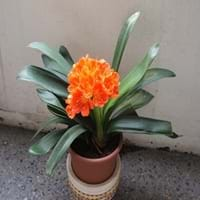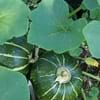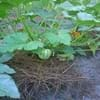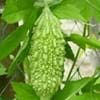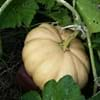Life Span
Annual
Perennial
Type
Vegetable
Bulb or Corm or Tuber
Origin
Central America, Mexico, North America
South Africa
Types
Neck, Really Big Hybrid, Waltham
Not Available
Habitat
Cultivated Beds
Temperate Regions, Woodlands
USDA Hardiness Zone
9-11
9-11
Sunset Zone
A1, A2, A3, H1, H2, 1a, 1b, 2a, 2b, 3a, 3b, 4, 5, 6, 7, 8, 9, 10, 11, 12, 13, 14, 15, 16, 17, 18, 19, 20, 21, 22, 23, 24
21,22
Habit
Prostrate/Trailing
Clump-Forming
Flower Color
Yellow, Gold
Yellow, Red, Orange
Flower Color Modifier
Bicolor
Bicolor
Fruit Color
Peach, Tan
Red
Leaf Color in Spring
Green, Dark Green
Dark Green
Leaf Color in Summer
Green, Dark Green
Light Green
Leaf Color in Fall
Green, Dark Green, Yellow green
Several shades of Green
Leaf Color in Winter
Not Available
Light Green
Leaf Shape
Heart-shaped
Long Linear
Plant Season
Summer, Fall
Spring, Winter
Sunlight
Full Sun
Partial shade, Full Shade
Growth Rate
Very Fast
Slow
Type of Soil
Loam
Loam, Sand
The pH of Soil
Neutral
Acidic, Neutral
Soil Drainage
Well drained
Well drained
Bloom Time
Early Summer, Indeterminate
Early Spring, Spring, Late Spring, Winter, Late Winter
Tolerances
Drought
Drought
Where to Plant?
Container, Ground, Pot
Container, Ground
How to Plant?
Seedlings
Seedlings, Transplanting
Plant Maintenance
Medium
Medium
Watering Requirements
Prefer drip-irrigation instead of Over-head watering, Requires regular watering
Water more in summer
In Summer
Lots of watering
Lots of watering
In Spring
Moderate
Moderate
In Winter
Average Water
Average Water
Soil pH
Neutral
Acidic, Neutral
Soil Type
Loam
Loam, Sand
Soil Drainage Capacity
Well drained
Well drained
Sun Exposure
Full Sun
Partial shade, Full Shade
Pruning
Cut out old flower stalks, Prune after flowering, Remove dead or diseased plant parts, Remove the old foliage
Remove damaged leaves, Remove dead branches, Remove dead leaves
Fertilizers
Apply 10-10-10 amount, Balanced organic fertilizer, iron-rich fertilizer, Nitrogen, Phosphate
fertilize in growing season
Pests and Diseases
Bacteria wilt, Bacterial leaf spot, Blight, Cucumber beetles, Cutworms, Dry root rot, Fusarium leaf spot, Soft scales
Red blotch
Plant Tolerance
Full Sun, Shade areas, Shallow soil
Drought
Flower Petal Number
Single
Single
Foliage Texture
Coarse
Coarse
Foliage Sheen
Matte
Glossy
Attracts
Ants, Bees
Insects
Allergy
Dermatitis
Asthma, breathing problems, Itchiness
Aesthetic Uses
Not Used For Aesthetic Purpose
Beautification, Landscape Designing, Showy Purposes, Used for decorating walls, fences, gates, hedges, etc.
Beauty Benefits
Glowing Skin, Good for skin and hair
Not Available
Environmental Uses
Air purification
Air purification, Food for insects, Prevent Soil Erosion
Medicinal Uses
Antiasthamatic, anti-cancer, Cardiovascular problems, cholesterol-lowering, constipation, Diabetes, Fiber, High blood pressure, High cholestrol, Immunity, Manganese, Obesity, Vitamin A, Vitamin C, Vitamin E
No Medicinal Use
Part of Plant Used
Flowers, Fruits, Leaves, Seeds
Flowers
Other Uses
For making oil, Used As Food
Decoration Purposes, Showy Purposes, Used as Ornamental plant
Used As Indoor Plant
Yes
Yes
Used As Outdoor Plant
Yes
Yes
Garden Design
Edible, Herb / Vegetable, Vine
Container, Feature Plant, Foundation, Houseplant, Mixed Border
Botanical Name
CUCURBITA pepo 'White Crown of Thorns'
CLIVIA miniata
Common Name
Winter Squash
Clivia
In German
Winter squash
Clivia
In French
courges d'hiver
Clivia
In Spanish
calabaza de invierno
Clivia
In Greek
σκουός χειμώνα
κλίβια
In Portuguese
abóbora
Clivia
In Latin
cucurbita
Clivia
Phylum
Magnoliophyta
Magnoliophyta
Class
Magnoliopsida
Liliopsida
Order
Violales
Asparagales
Family
Cucurbitaceae
Liliaceae
Clade
Angiosperms, Eudicots, Rosids
Angiosperms, Monocots
Tribe
Not Available
Not Available
Subfamily
Papilionoideae
Amaryllidoideae
Number of Species
Not Available
Season and Care of Winter Squash and Clivia
Season and care of Winter Squash and Clivia is important to know. While considering everything about Winter Squash and Clivia Care, growing season is an essential factor. Winter Squash season is Summer and Fall and Clivia season is Summer and Fall. The type of soil for Winter Squash is Loam and for Clivia is Loam, Sand while the PH of soil for Winter Squash is Neutral and for Clivia is Acidic, Neutral.
Winter Squash and Clivia Physical Information
Winter Squash and Clivia physical information is very important for comparison. Winter Squash height is 7.62 cm and width 50.80 cm whereas Clivia height is 30.50 cm and width 25.40 cm. The color specification of Winter Squash and Clivia are as follows:
Winter Squash flower color: Yellow and Gold
Winter Squash leaf color: Green, Dark Green
Clivia flower color: Yellow, Red and Orange
- Clivia leaf color: Dark Green
Care of Winter Squash and Clivia
Care of Winter Squash and Clivia include pruning, fertilizers, watering etc. Winter Squash pruning is done Cut out old flower stalks, Prune after flowering, Remove dead or diseased plant parts and Remove the old foliage and Clivia pruning is done Remove damaged leaves, Remove dead branches and Remove dead leaves. In summer Winter Squash needs Lots of watering and in winter, it needs Average Water. Whereas, in summer Clivia needs Lots of watering and in winter, it needs Average Water.

